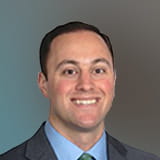This week, the federal government will begin allocating COVID-19 vaccines directly to select Federally Qualified Health Centers (FQHCs) across the country. The move follows an official announcement last week from President Biden and members of his COVID-19 response task force.
To date, some health centers have received a small supply of vaccine doses. However, that supply has come from state governments, which receive a vaccine allocation from the federal government and then are responsible for allocating that supply to health centers, hospitals, and other vaccination sites. With this program, the states will be cut out of the allocation process with the federal government allocating vaccines directly to health centers.
Beyond FQHCs, under President Biden’s vaccine distribution plan, the federal government has also begun coordinating shipments of vaccines directly to pharmacies. That retail pharmacy vaccine program began last week with 6,500 pharmacies, with the goal of eventually reaching about 40,000 pharmacies.
Program Details
According to White House officials and a White House fact sheet released last week, this new program is launching as part of a broader effort to expand outreach to traditionally underserved communities and to ensure equity in the vaccine rollout.
Today, there are more than 1,300 community health centers (FQHCs) across the country that provide access to care and healthcare services for nearly 30 million patients, over 90 percent of which are individuals or families living at or below 200 percent of federal poverty guidelines. Many health centers are located in high-need urban, rural, and frontier communities. Thus, by allocating vaccine doses directly to health centers through this new program, vaccine doses will be more likely to reach the traditionally hard-to-reach patient populations that health centers serve.
According to information released by the U.S. Department of Health and Human Services’ (HHS) Health Resources and Services Administration (HRSA), the program will “directly allocate a limited supply of COVID-19 vaccine to select HRSA-funded health centers.” As noted by the White House, “the program will be phased in, with the first centers able to start ordering vaccines as early as the week of February 15” and “the initial phase [to] include at least one Community Health Center in each state, expanding to 250 centers in the coming weeks.”
What it Means for Health Centers
HRSA has yet to publicly identify which health centers have been selected for the initial phase of the program. However, the agency has said that it will select centers that specialize in caring for particularly hard-to-reach and disproportionately affected populations. This will include: “those that serve a large volume of one of the following disproportionately affected populations: individuals experiencing homelessness, public housing residents, migrant/seasonal agricultural workers, or patients with limited English proficiency.”
Health centers should note that any allocation of vaccines provided for this program is separate from allocations driven by a health center’s state or jurisdiction. However, as noted by HRSA, “this separate federal allocation will be deployed in coordination with jurisdictions.” Translation: while the allocations will be separate, the delivery of vaccine supply should be coordinated.
Eventually, as vaccine supply increases, the program is anticipated to expand to every health center in the county. With nearly 1,400 health centers operating almost 13,000 service delivery sites in every U.S. state, U.S. territory, and the District of Columbia, this program- and our nation’s community health centers- could soon play a major role in the vaccination process.
Health centers interested in learning more about this program, should consult HRSA’s program website and check HRSA’s newsroom for any future updates.
For more information about NextGen Healthcare’s resources and solutions available, please visit our COVID-19 Resources page.
Meet NextGen Ambient Assist, your new AI ally that generates a structured SOAP note in seconds from listening to the natural patient/provider conversation.
Read Now